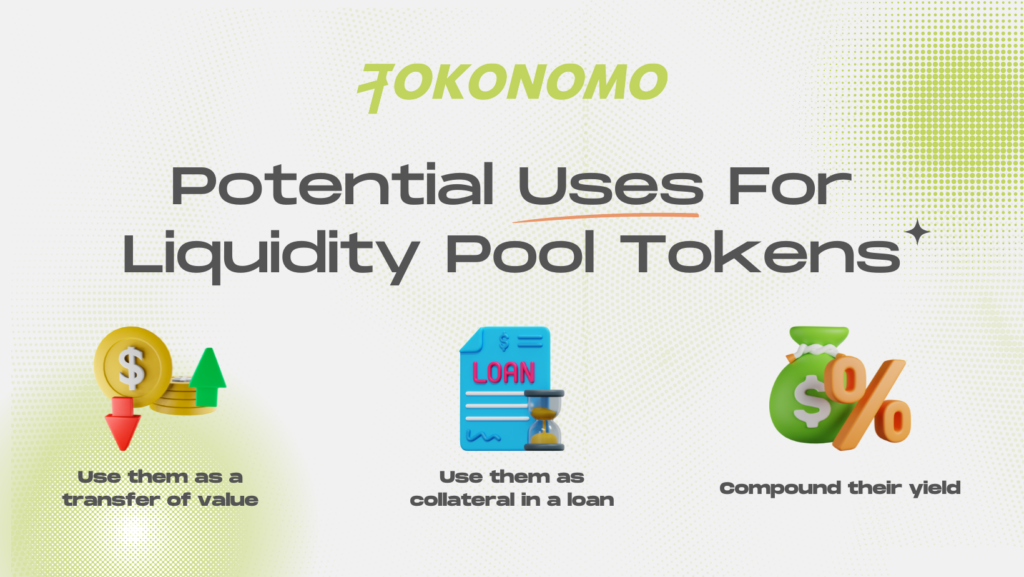Table of Contents
Liquidity Pool (LP) tokens have emerged as a key component in decentralized finance (DeFi) protocols, playing a crucial role in ensuring liquidity provision and facilitating efficient trading. In this blog post, we delve deep into LP tokens, providing a comprehensive analysis of their significance, functioning, and potential benefits.
What Is The Meaning of Supplying Liquidity?
Liquidity, in its simplest form, refers to the capacity to effortlessly trade an asset without causing substantial fluctuations in its price. Take the example of a cryptocurrency such as Bitcoin (BTC); it stands as a prime example of a highly liquid asset. You have the ability to execute transactions involving Bitcoin across a multitude of exchanges, regardless of the transaction size, without exerting a significant influence on its price. Nevertheless, not every token enjoys the privilege of possessing this level of liquidity.
In smaller-scale projects and decentralized finance (DeFi), liquidity can be scarce. For example, a coin that is only available on one exchange can make finding a buyer or seller difficult. In these situations, the liquidity pool model, sometimes called liquidity mining, can be a solution to the liquidity problem.
Liquidity pools allow users to exchange two different assets without needing market makers, takers, or an order book. The pool’s price is determined by the ratio of the assets in it. Users who add tokens to the pool to enable trading are called liquidity providers. They charge a small fee to users who swap their tokens.


To clarify, when we mention providing liquidity, we are specifically addressing the concept of DeFi liquidity pools, particularly in the context of LP tokens.
It’s essential to note that the mere existence of a liquidity pool for a particular asset pair does not guarantee the presence of substantial liquidity. Nonetheless, you will always have the option to conduct trades using the pool, eliminating the need to depend on the availability of a matching counterparty for your order.
What Is The Functioning Mechanism of Liquidity Pool (LP) Tokens?
After depositing a pair of tokens into a liquidity pool, you will be issued LP tokens as a form of confirmation. These LP tokens represent your stake in the pool and grant you the ability to retrieve your initial deposit along with any accrued interest. Therefore, the security of your deposit is contingent on your possession of these LP tokens. If you happen to misplace or lose them, you risk forfeiting your ownership share.
You can locate your LP tokens within the wallet that you utilized for liquidity provision. In certain instances, you may need to include the smart contract address of the LP token to ensure its visibility in your cryptocurrency wallet. Most LP tokens within the DeFi ecosystem are transferable between different wallets, allowing for the transfer of ownership. Nevertheless, it is advisable to verify this with the liquidity pool service provider, as exceptions may apply. Transferring these tokens could potentially result in a permanent loss of the provided liquidity in certain situations.
Where Can You Acquire Liquidity Pool Tokens?
LP tokens, exclusively reserved for liquidity providers, can be acquired by engaging with a DeFi DApp, such as PancakeSwap or Uniswap. It’s worth noting that the LP token system is widely employed across various blockchains, DeFi platforms, automated market makers (AMMs), and decentralized exchanges (DEXs).
Conversely, in the realm of centralized finance (CeFi) on an exchange, if you opt for liquidity pool services, you’re unlikely to be awarded LP tokens; rather, they will be securely held in custody by the custodial service provider.
Typically, your LP token will be denominated with the names of the two tokens you are contributing liquidity. For instance, when providing liquidity with CAKE and BNB in a PancakeSwap liquidity pool, you’ll receive a BEP-20 token known as CAKE-BNB LP. In Ethereum-based systems, LP tokens are generally structured as ERC-20 tokens.
What Are The Potential Uses For Liquidity Pool (LP) Tokens?
LP tokens, functioning much like a receipt, offer a versatile array of applications within the realm of DeFi. In this dynamic ecosystem, opportunities abound for leveraging your assets across various platforms and orchestrating an intricate interplay of services, akin to assembling blocks in a LEGO set.


Utilize Them For The Purpose of Transferring Value
One such application is the use of LP tokens as a means of transferring value. At its core, this represents perhaps the most straightforward utility of LP tokens – facilitating the exchange of ownership for the associated liquidity. While some LP tokens are tethered to specific wallet addresses, the majority allow for the seamless transfer of these tokens. For instance, you have the ability to dispatch BNB-wBNB LP tokens to another individual who can subsequently extract the BNB and wBNB assets from the liquidity pool.
Nevertheless, manually computing the precise quantity of tokens residing in the pool can prove to be a daunting task. In such instances, a DeFi calculator can come to the rescue, enabling you to compute the volume of staked tokens linked to your LP tokens.
Pledge Them as Collateral For a Loan
Another compelling application involves employing LP tokens as collateral for obtaining loans. Given that LP tokens confer ownership of an underlying asset, they serve as a valuable form of collateral. Similar to when you pledge BNB, ETH, or BTC as collateral to secure a cryptocurrency loan, certain platforms extend the option of utilizing your LP tokens as collateral. Typically, this arrangement allows you to borrow stablecoins or other high-market-cap assets.
In these scenarios, the loan is generally overcollateralized. If you fail to maintain a specified collateral ratio, the lender retains the right to utilize your LP tokens to claim and liquidate the underlying assets.
Enhance Their Overall Yield
Furthermore, LP token holders frequently engage in the practice of compounding their yield. A prevalent strategy involves depositing LP tokens into a yield compounder, sometimes referred to as a yield farm. These services take charge of your LP tokens, periodically harvesting the rewards and acquiring additional tokens of the paired asset. Subsequently, the compounder reinvests these tokens in the liquidity pool, allowing you to exponentially increase your interest earnings.
While manual execution of this process is possible, yield farms generally offer more efficient compounding mechanisms than individual users can achieve. Expensive transaction fees can be shared among multiple users, and compounding activities can occur multiple times daily, contingent upon the chosen strategy.
What Potential Dangers or Vulnerabilities Do Liquidity Pool Tokens Present?
Just like any other token, LP tokens come with inherent risks that you should be aware of. These risks encompass:
- Loss or theft: Losing your LP token means forfeiting your stake in the liquidity pool along with any accrued interest.
- Smart contract failure: If the liquidity pool you’re engaged with experiences a smart contract failure, your LP tokens may no longer be capable of returning your liquidity. The same risk applies if you decide to stake your LP tokens with a yield farm or loan provider, as their smart contracts could also be susceptible to failure.
- Ambiguity in determining their value: When assessing the worth of your LP tokens, it can be quite challenging to ascertain their exact value. This is especially true when token prices have diverged, leading to impermanent loss. Additionally, you must consider the accrued interest, further complicating the process of making an informed decision regarding when to exit your liquidity position.
- Opportunity risk: By providing your tokens as liquidity, you are exposed to an opportunity cost. In some instances, you might find that investing your tokens elsewhere or utilizing them in a different opportunity offers a better return on investment.
Conclusion
The next time you decide to offer your crypto liquidity to a DeFi protocol’s liquidity pool, it’s worth contemplating whether you’d like to leverage your LP tokens. Initiating a deposit into a liquidity pool serves as the initial step in your DeFi strategy. Therefore, aside from simply HODLing, it’s advisable to assess your investment strategies and risk tolerance in order to determine if pursuing further investments aligns with your objectives.











